Fourth Quarter 2017 Real Estate Market Report: Sussex County Overview
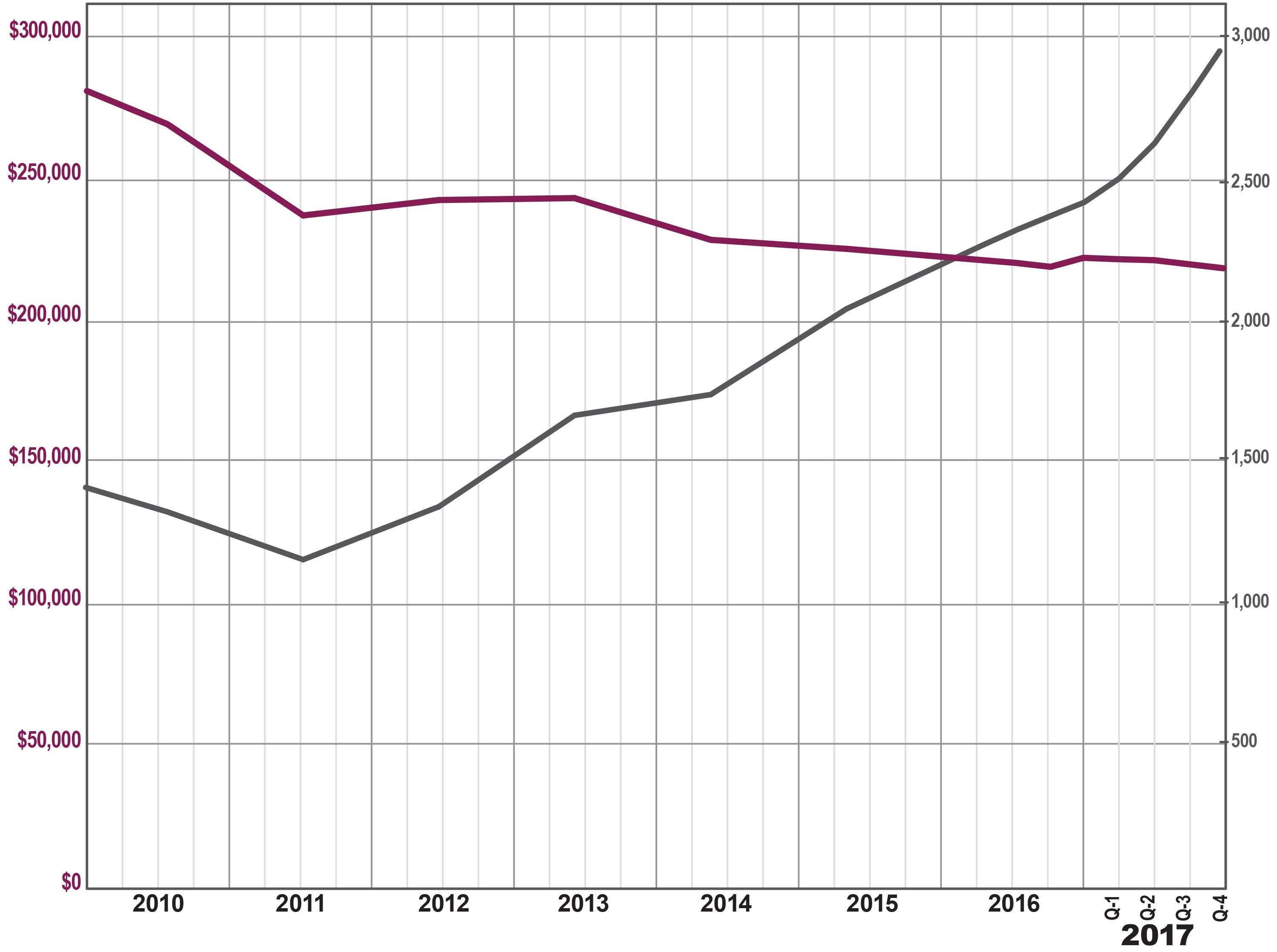
 Activity in the Sussex County housing market surged yet again in the fourth quarter of 2017, with sales up sharply even while prices continued to struggle.
Activity in the Sussex County housing market surged yet again in the fourth quarter of 2017, with sales up sharply even while prices continued to struggle.
Sales. Sussex sales were up yet again in the fourth quarter, rising over 18% from last year and now up over 22% for the year. And the 2,348 sales for the year represented the highest calendar year total in over 10 years. Indeed, Sussex sales have now more than doubled from the bottom of the market in 2011.
Prices. Even with these sustained increases in buyer demand, though, prices continued to struggle. Average prices were down every quarter in 2017 compared to the prior year quarter, falling 2% in the first, 2% in the second, 3% in the third, and now 3% in the fourth. Accordingly, the yearlong price trend was negative, down 2.5% on average and almost 5% at the median. We remain baffled by this, since rising sales and declining inventory would normally drive prices up, not down. But we’ve now seen this trend develop for over a year, so we are skeptical, if hopeful, that prices will turn around in the spring market.
Inventory. The Sussex inventory of available homes for sale fell again, dropping over 35% and now down to about seven months. That’s a significant decline, but inventory is still higher than in other Northern New Jersey counties, which are all below the six‑month inventory line that usually signals the beginning of a seller’s market. If inventory continues to go down, we would expect that to put some additional upward pressure on pricing.
Negotiability. The negotiability metrics indicated that sellers were gaining negotiating leverage with buyers. For the year, the days‑on‑market fell by 14%, dropping by about a month, and sellers were retaining a lot more of their asking price, with listing retention jumping almost two percentage points and now up to over 96%.
Going forward, we expect that Sussex is going to continue to see rising sales. The question is whether this will finally drive some meaningful price appreciation, or at least stem the decline we saw this year. But we remain hopeful that an improving economy, attractive pricing, and near‑historically‑low interest rates will eventually drive prices up in 2018.
To learn more about Better Homes and Gardens Real Estate Rand Realty, visit their website and Facebook page, and make sure to “Like” their page. You can also follow them on Twitter.
Fourth Quarter 2017 Real Estate Market Report: Essex County Overview
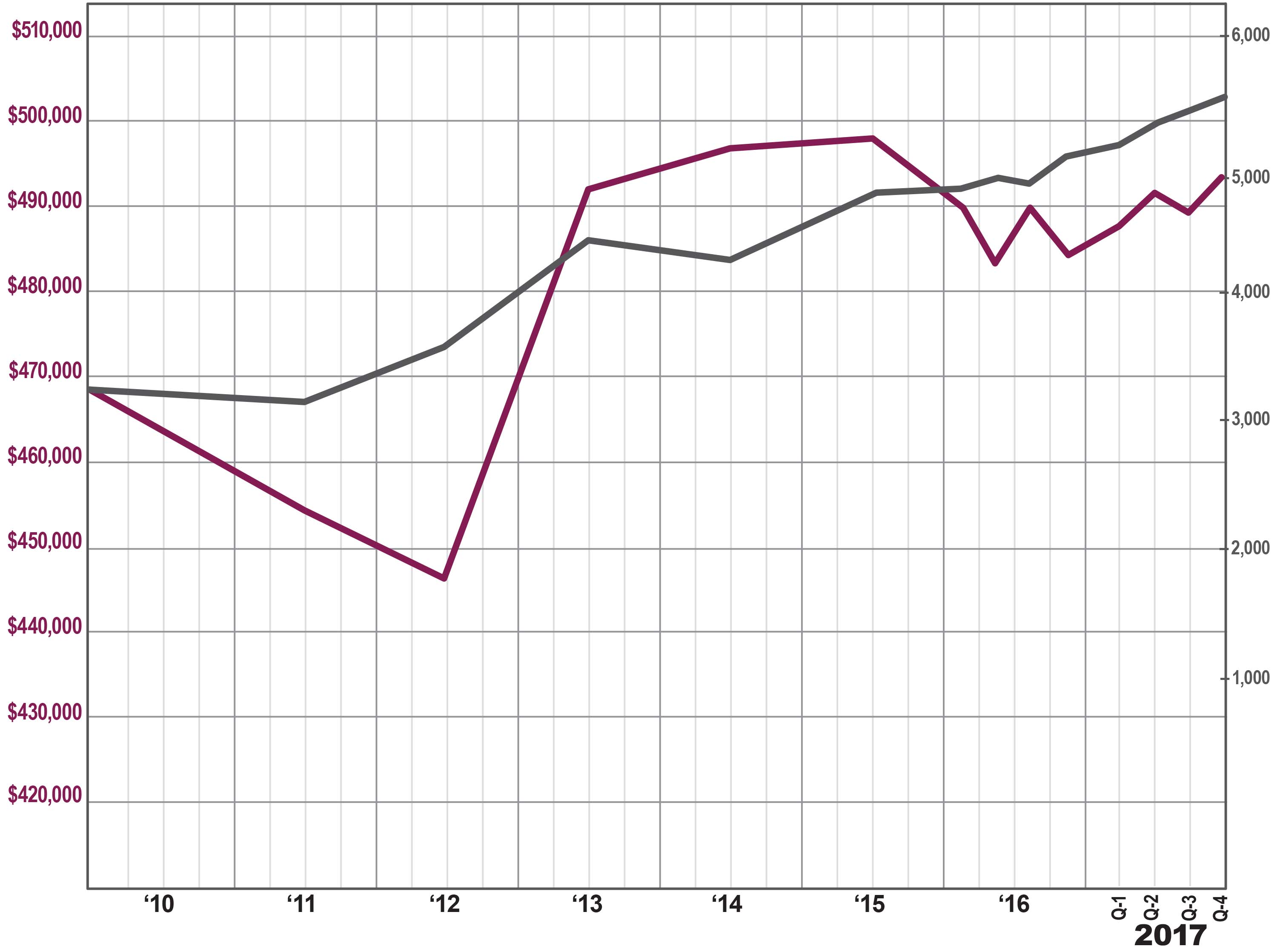
 The Essex County housing finished 2017 strong, with solid increases in both sales and prices.
The Essex County housing finished 2017 strong, with solid increases in both sales and prices.
Sales. Essex sales activity was up again, rising almost 6% from the fourth quarter of last year. And for the full year, sales were up over 8%, hitting over 5,000 sales. This represented the largest yearly total since the height of the seller’s market over 10 years ago, and an increase of almost 70% from the bottom of the market in 2011.
Prices. Essex also started to show some signs of meaningful price appreciation. For the quarter, the average price rose over 5% and the median was up over 4%. More importantly, we saw the first meaningful yearly price appreciation in years, with the average and median both up about 2%. With inventory continuing to fall and buyer demand relatively strong, we would expect prices to gain some momentum throughout 2018.
Inventory. Essex inventory fell again, dropping over 41% from last year’s fourth quarter and now down to just over four months’ worth of available homes. We measure “months of inventory” by calculating the number of months it would take to sell all the available homes at the current rate of absorption, and generally consider anything below six months to signal a seller’s market that would normally drive prices up. So, the fact that Essex is now well below six months would tend to indicate more price appreciation in 2018.
Negotiability. The negotiability indicators – the amount of time sold homes were on the market, and the rate at which sellers were able to retain their full asking price – suggested the sellers might be gaining significant negotiating leverage. Most notably, the listing retention rate crossed the 100% threshold for the third quarter in a row, meaning that Essex homes on average are selling for higher than the listed price. Similarly, the days‑on‑market fell about 11%, and is now down to well under four months of market time. Those are both positive signals of potential future appreciation.
Going forward, we expect that Essex County’s sales activity will continue to drive meaningful price appreciation. With homes still at historically affordable prices, interest rates low, and a generally improving economy, we believe that low inventory levels coupled with stable buyer demand will drive a strong market throughout 2018.
To learn more about Better Homes and Gardens Real Estate Rand Realty, visit their website and Facebook page, and make sure to “Like” their page. You can also follow them on Twitter.
Fourth Quarter 2017 Real Estate Market Report: Morris County Overview
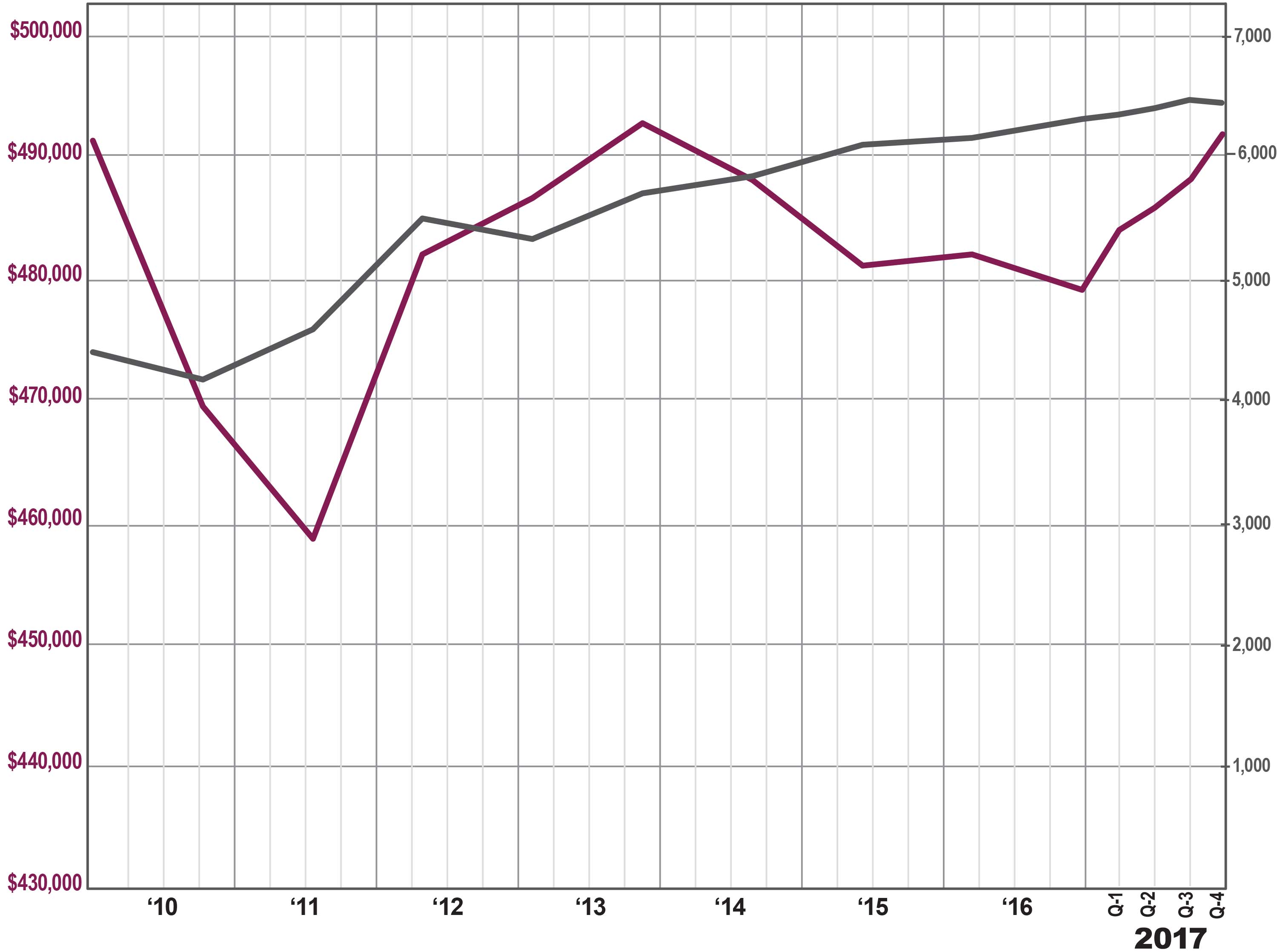
 The Morris County housing market finished 2017 with strong signs of meaningful price appreciation, even while low levels of inventory continued to stifle sales growth.
The Morris County housing market finished 2017 with strong signs of meaningful price appreciation, even while low levels of inventory continued to stifle sales growth.
Sales. Reduced inventory continued to hold back Morris sales growth, with transactions down almost 3% for the quarter, breaking a streak of 12 straight quarters of year‑on‑year sales growth. That said, sales were still up almost 2% for the year, and are now up almost 70% from the bottom of the market in 2011. More significantly, sales are falling not because of a lack of buyer demand, but a lack of available homes for eager buyers to purchase.
Prices. These sustained levels of buyer demand are finally having some modest impact on pricing. Prices were up again in the fourth quarter, rising almost 5% on average and 3% at the median. And we are starting to see long‑term price appreciation, with the 2017 full‑year average price up almost 3% and the median up almost 4%. Sustained levels of buyer demand coupled with falling inventory is likely to continue to drive prices up in 2018.
Inventory. Morris inventory fell again, dropping almost 39% from last year’s fourth quarter and now down to 4.5 months. We measure “months of inventory” by calculating the number of months it would take to sell all the available homes at the current rate of absorption, and generally consider anything below six months to signal a seller’s market that would normally drive prices up. So, the fact that Morris inventory is now well below that six‑month mark indicates that we could be in for some meaningful price appreciation throughout 2018.
Negotiability. The negotiability indicators showed that sellers are continuing to gain negotiating leverage with buyers. For the year, the days‑on‑market were down almost 8%, falling by about 10 days, and the listing retention rate was up almost a full point, now up to almost 98% of the last listed price.
Going forward, we expect that Morris County’s sales activity and low levels of inventory will continue to have a meaningful impact on pricing. With homes still at historically affordable prices, interest rates low, and a generally improving economy, we believe that Morris will enjoy a robust seller’s market in 2018.
To learn more about Better Homes and Gardens Real Estate Rand Realty, visit their website and Facebook page, and make sure to “Like” their page. You can also follow them on Twitter.
Fourth Quarter 2017 Real Estate Market Report: Passaic County Overview
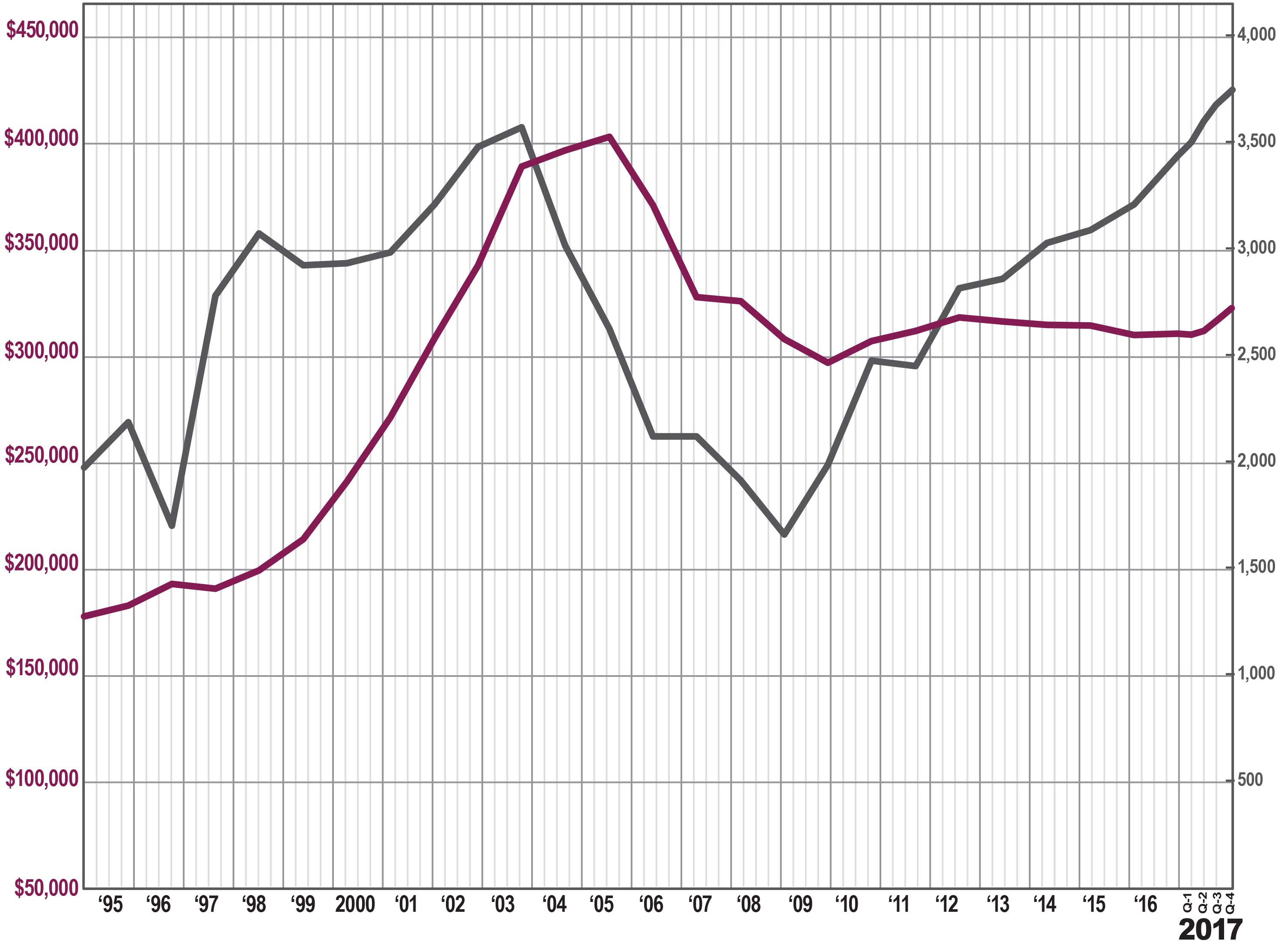
 The Passaic County housing market finished the 2017 year strong, with solid increases in sales and prices, and clear signs of a developing seller’s market.
The Passaic County housing market finished the 2017 year strong, with solid increases in sales and prices, and clear signs of a developing seller’s market.
Sales. Passaic sales were up again in the fourth quarter, rising over 4% and up over 11% for the 2017 calendar year. We’ve now seen sustained increases in buyer demand for over five years, with quarterly sales up in 24 out of the last 26 quarters. As a result, Passaic closed over 3,600 homes in 2017, the highest total we’ve seen since the height of the last seller’s market over 10 years ago.
Prices. More importantly, we’re starting to see these sustained levels of buyer demand have an impact on pricing. Prices were up across the board in the fourth quarter, rising almost 5% on average and at the median. More importantly, the yearlong trend was also positive, with prices up 3% on average and 4% at the median. With buyer demand strong, and inventory falling, we would expect prices to continue to rise.
Inventory. Inventory was down again, falling 41% from last year, and is now down to under five months of inventory. Generally, anything less than six months indicates the start of a seller’s market, and we are now well below that level.
Negotiability. The Passaic negotiability metrics indicated that sellers are continuing to gain leverage over buyers, with homes selling more quickly and for closer to the asking price. Over the past year, the days‑on‑market have fallen over 12%, and are now down to about four months of market time. Similarly, the listing retention rate is up over a full percentage point, now close to 98% of the last listed price. These are both good signs for Passaic sellers.
Going forward, we believe that Passaic’s fundamentals are sound, with homes priced at relatively attractive levels, rates near historic lows, and a stable economy. Accordingly, we expect these levels of buyer demand, coupled with declining inventory, to continue to drive price appreciation throughout a robust 2018.
To learn more about Better Homes and Gardens Real Estate Rand Realty, visit their website and Facebook page, and make sure to “Like” their page. You can also follow them on Twitter.
Fourth Quarter 2017 Real Estate Market Report: Bergen County Overview
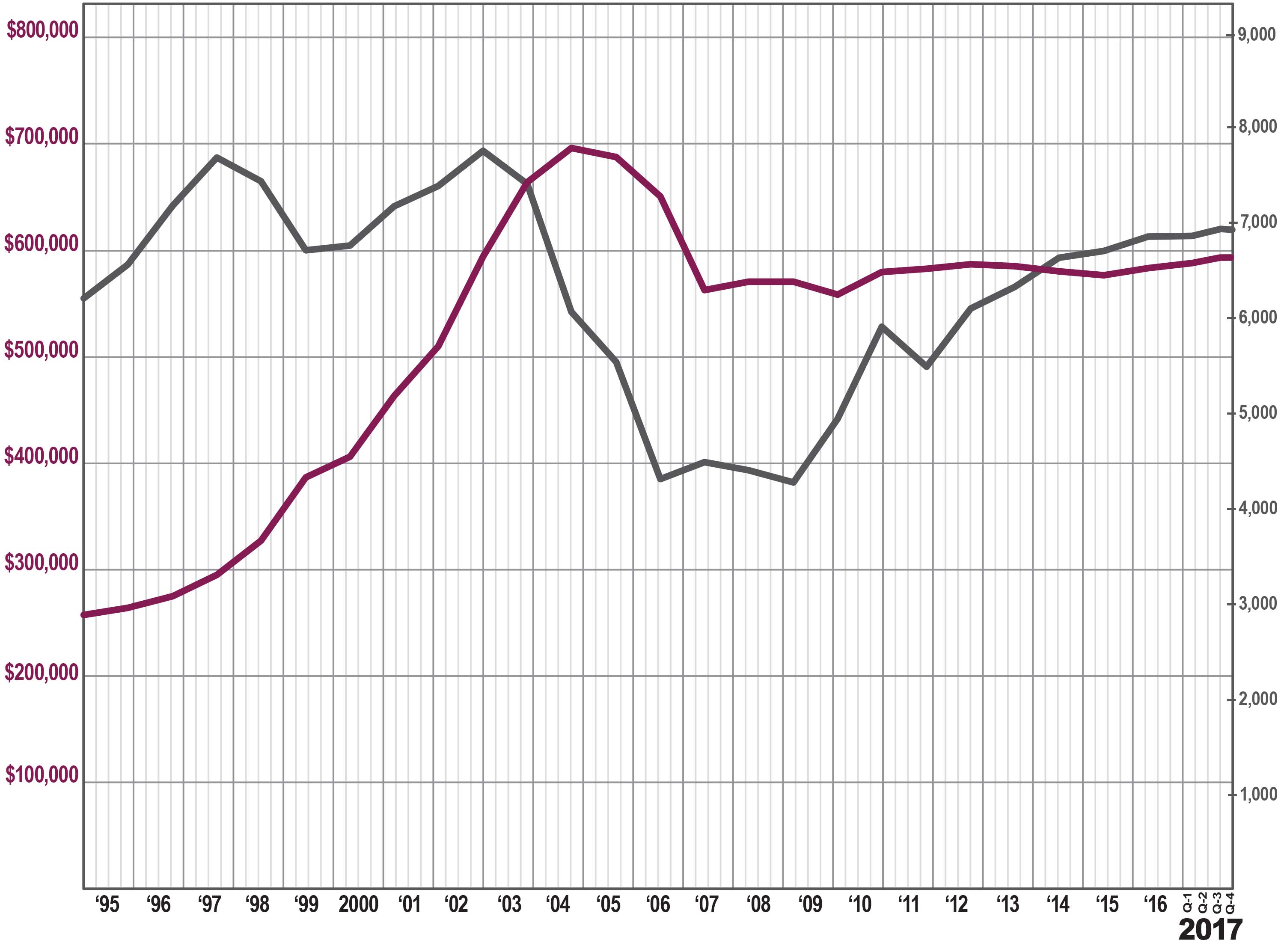
 The Bergen County housing market slowed a bit in the fourth quarter, but still finished the year with meaningful price appreciation and remarkably low inventory levels.
The Bergen County housing market slowed a bit in the fourth quarter, but still finished the year with meaningful price appreciation and remarkably low inventory levels.
Sales. Home sales were down slightly, falling over 4% from the fourth quarter of 2016, which marked the first quarterly decrease in sales in over three years. And for the year, sales were basically flat. That said, the near‑7,000 single‑family sales in 2017 was the highest number of transactions since the height of the last seller’s market over 10 years ago. What’s holding sales back right now is not a lack of demand, but a lack of inventory. If we start seeing more homes hit the market, we’ll see sales go up sharply.
Prices. Single‑family home prices were relatively flat after a torrid third quarter, falling just a tick on average and up about 2% at the median. Over the year, though, we are seeing the impact of declining inventory and strong demand, with prices up about 4% on average and at the median.
Negotiability. All the negotiability indicators are also signaling a rising seller’s market. Inventory continued to tighten in the fourth quarter, with the months of inventory falling almost 5% and now down to well under four months. Anything fewer than six months starts to signal a seller’s market, and we are now way below that level. Similarly, homes are continuing to sell more quickly and for closer to the asking price. As inventory continues to tighten, we would expect to see sellers gain even more negotiating leverage.
Condos. Activity in the Bergen condo market was flat in the fourth quarter, and prices fell about 2%. For the year, sales were up about 5% and prices down just a tick. With inventory now down to about four months, though, we would expect to eventually see some meaningful price appreciation.
Going forward, we expect Bergen County will experience a robust 2018. With inventory tightening, a relatively strong economy, near‑historically‑low interest rates, and prices still at attractive 2004‑05 levels, we believe that sustained buyer demand will continue to drive meaningful price appreciation through the full year. And those rising prices will likely tempt more homeowners into the market, which will drive sales up to even higher levels.
To learn more about Better Homes and Gardens Real Estate Rand Realty, visit their website and Facebook page, and make sure to “Like” their page. You can also follow them on Twitter.
Fourth Quarter 2017 Real Estate Market Report: Northern New Jersey Overview
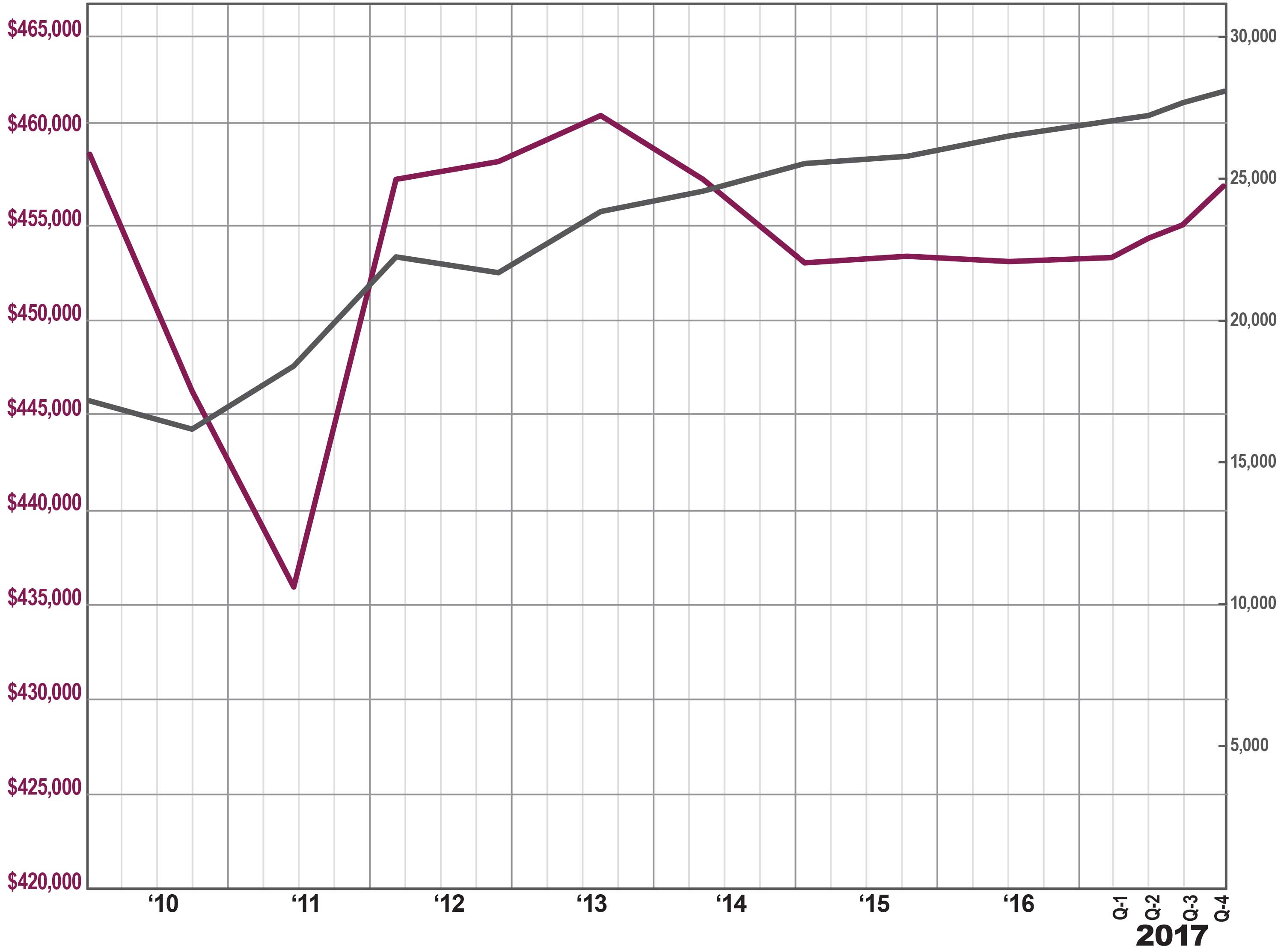
 The Northern New Jersey housing market finished 2017 strong, with prices up even while declining inventory throughout the region stifled sales growth. With demand high, and available homes low, we believe that homeowners will continue to enjoy price increases throughout 2018.
The Northern New Jersey housing market finished 2017 strong, with prices up even while declining inventory throughout the region stifled sales growth. With demand high, and available homes low, we believe that homeowners will continue to enjoy price increases throughout 2018.
Regional sales were up, but not in every county. Regional sales were up slightly for the quarter, rising almost 2% from the fourth quarter of last year, even while some counties like Bergen and Morris were down slightly. We believe that a lack of inventory is stifling sales growth, simply because we don’t have enough “fuel for the fire” to satiate the existing buyer demand. That said, sales in every county were up for the full calendar year, with the 27,000 regional sales in 2017 representing almost a 6% increase from 2016, and a full 75% increase from the bottom of the market in 2011. Inventory was down significantly again. The number of homes for sale continued to fall in the fourth quarter, dropping in every county in the region. Indeed, most of our Northern New Jersey markets have now fallen below the six‑months‑of‑inventory level that traditionally starts to signal a seller’s market: Bergen at 3.4, Passaic at 4.9, Morris at 4.5, and Essex at 4.1. Only Sussex County, at 7.3 months of inventory, is above that six‑month indicator. If inventory continues to tighten, and demand stays strong, we are likely to see more upward pressure on pricing. With sales up and inventory down, prices are starting to show some meaningful price appreciation. Basic economics of supply and demand would tell us that after five years of steadily increasing buyer demand, we would expect to see some meaningful price increases. And we’re starting to see some promising signs: for the 2017 year, the regional average price was up about 1%, and average prices were up in most of the counties in the region: Bergen up 4%, Passaic up 3%, Morris up 3%, Essex up 2%. Again, only Sussex was the outlier, with the average price down about 2%. Going forward, we remain confident that rising demand and falling inventory will continue to drive price appreciation through 2018. Sales have now been increasing for over five years, which has brought inventory below the seller’s market threshold in much of the region. The economic fundamentals are all good: homes are priced at 2004 levels (without even adjusting for inflation), interest rates are still near historic lows, and the regional economy is stable. Accordingly, we continue to believe the region is poised for a robust seller’s market in 2018.
To learn more about Better Homes and Gardens Real Estate Rand Realty, visit their website and Facebook page, and make sure to “Like” their page. You can also follow them on Twitter.
Fourth Quarter 2017 Real Estate Market Report: Dutchess County Overview
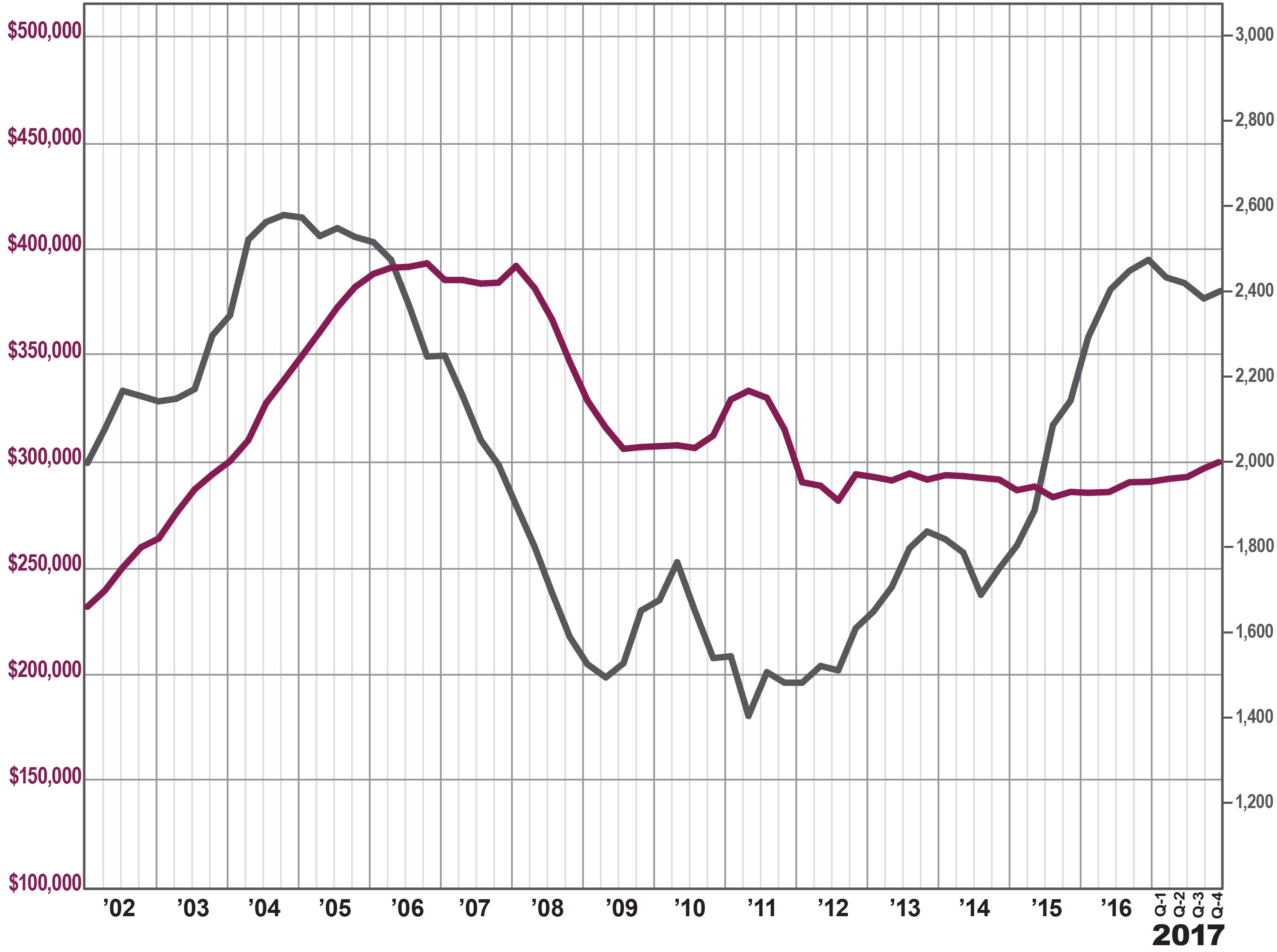
 The Dutchess County housing market finished the year strong, with the first clear signs of meaningful price appreciation in years.
The Dutchess County housing market finished the year strong, with the first clear signs of meaningful price appreciation in years.
Sales. Dutchess sales rose slightly in the fourth quarter, up just about 1%. For the year, sales were down over 4%, which reflects low levels of inventory more than a lack of demand. Dutchess definitely needs more listings, some “fuel for the fire” to accommodate strong buyer demand.
Prices. Home prices continued to show the effects of declining inventory coupled with strong demand, with pricing up almost 3% on average, almost 8% at the median, and almost 3% in the price‑per‑square foot. For the calendar year, Dutchess experienced meaningful price appreciation, with the average up almost 3%, the median rising 4%, and the price‑per‑square‑foot up over 3%. Average prices in Dutchess have now gone up for two straight years, following four straight years of declines, where prices were bouncing around the bottom.
Negotiability. Dutchess homes are continuing to sell more quickly and for closer to the asking price, reflecting the negotiating leverage that sellers are getting in this market.
Condos. The condo market was mostly down for the quarter and flat for the year. In the fourth quarter, sales were down over 7%, and prices were down over 6% on average and almost 5% at the median. For the year, sales and prices were mostly flat, but the negotiability indicators signaled that Dutchess condos were moving into a seller’s market.
Going forward, we believe that the Dutchess market will experience a robust 2018. With tightening inventory, a stable economy, near‑historically‑low interest rates, and homes still priced at appealing 2003‑04 levels, Dutchess is likely to see meaningful price appreciation throughout the year.
To learn more about Better Homes and Gardens Real Estate Rand Realty, visit their website and Facebook page, and make sure to “Like” their page. You can also follow them on Twitter.
Fourth Quarter 2017 Real Estate Market Report: Putnam County Overview
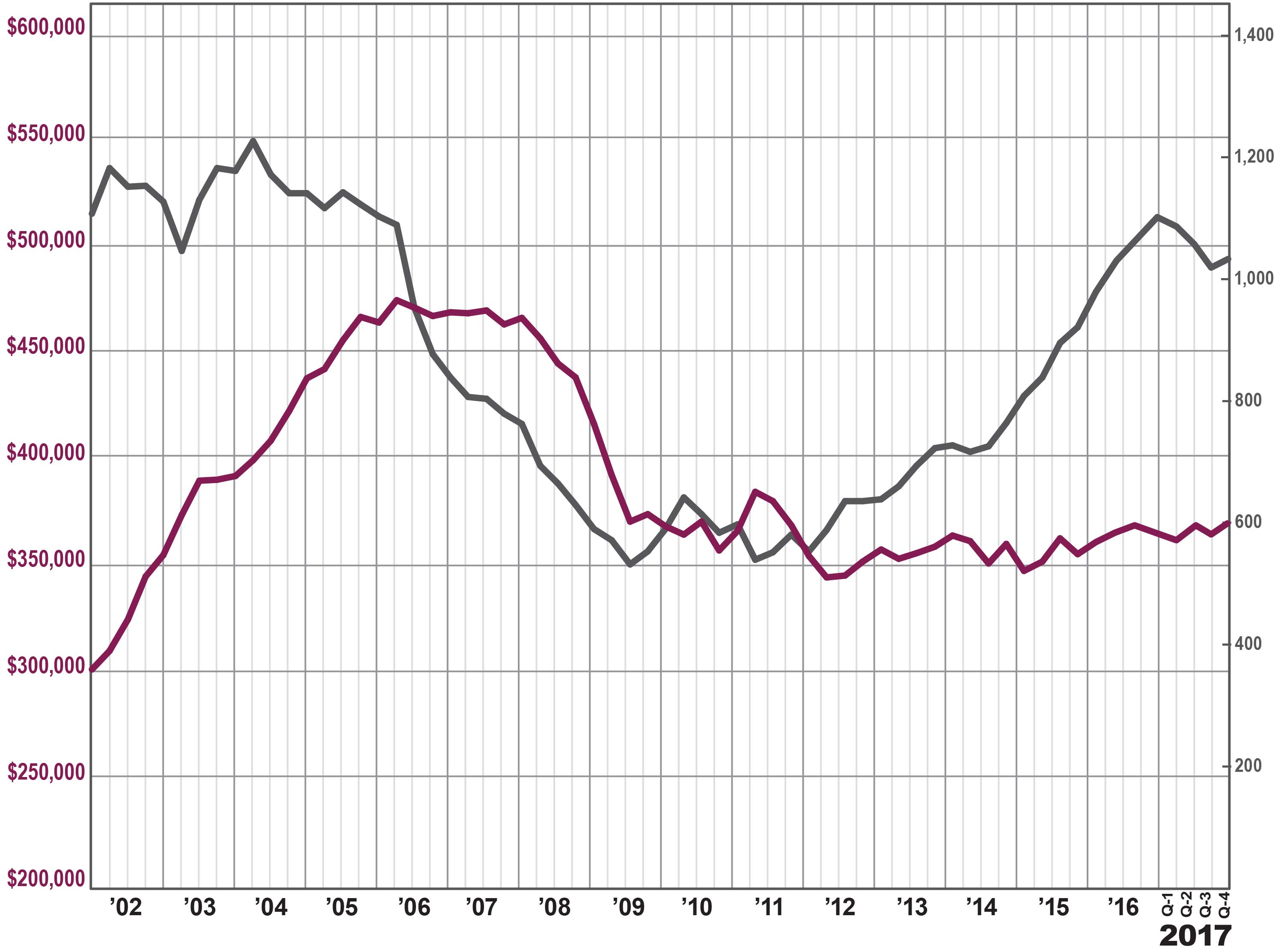
 The Putnam County housing market finished 2017 with a flourish, as low levels of inventory drove prices up dramatically.
The Putnam County housing market finished 2017 with a flourish, as low levels of inventory drove prices up dramatically.
Sales. Putnam single‑family home sales were up a tick for the quarter, following three straight quarters of decline. For the calendar year, sales were down over 7%, marking the first time in over five years where the yearly sales have gone down. This is not, though, due to a lack of demand, but rather a sign of the impact of severely low levels of inventory.
Prices. This lack of inventory drove a major spike in pricing in the fourth quarter, with prices up dramatically across the board: up almost 11% on average, over 8% at the median, and over 10% in the price‑per‑square‑foot. This was by far the largest quarterly increase in over 12 years, since the height of the last seller’s market. And one good quarter saved the year, with 2017 prices finishing up just a bit for the second year in a row.
Inventory. Inventory continued to tighten, falling over 6% and now down well below the six‑month level that usually denotes a tightening seller’s market. This lack of available homes is what’s been holding back sales, since we don’t have enough “fuel for the fire” to keep the market going.
Negotiability. The negotiability indicators support the idea that a seller’s market is emerging, with the listing retention rate up just a tick and the days‑on‑market continuing to fall.
Condos. The smallish condo market surged in the fourth quarter, with sales up over 18% and prices up just a tick. For the year, though, sales were down sharply and prices gave back a little, even while inventory continued to fall.
Going forward, we believe the Putnam County market will thrive in 2018 as a robust seller’s market. Demand will stay strong, with interest rates near historic lows, prices still at attractive 2004‑05 levels, and a strengthening economy. And if inventory remains low, prices will likely continue to appreciate meaningfully through the new year.
To learn more about Better Homes and Gardens Real Estate Rand Realty, visit their website and Facebook page, and make sure to “Like” their page. You can also follow them on Twitter.
Fourth Quarter 2017 Real Estate Market Report: Westchester County Overview
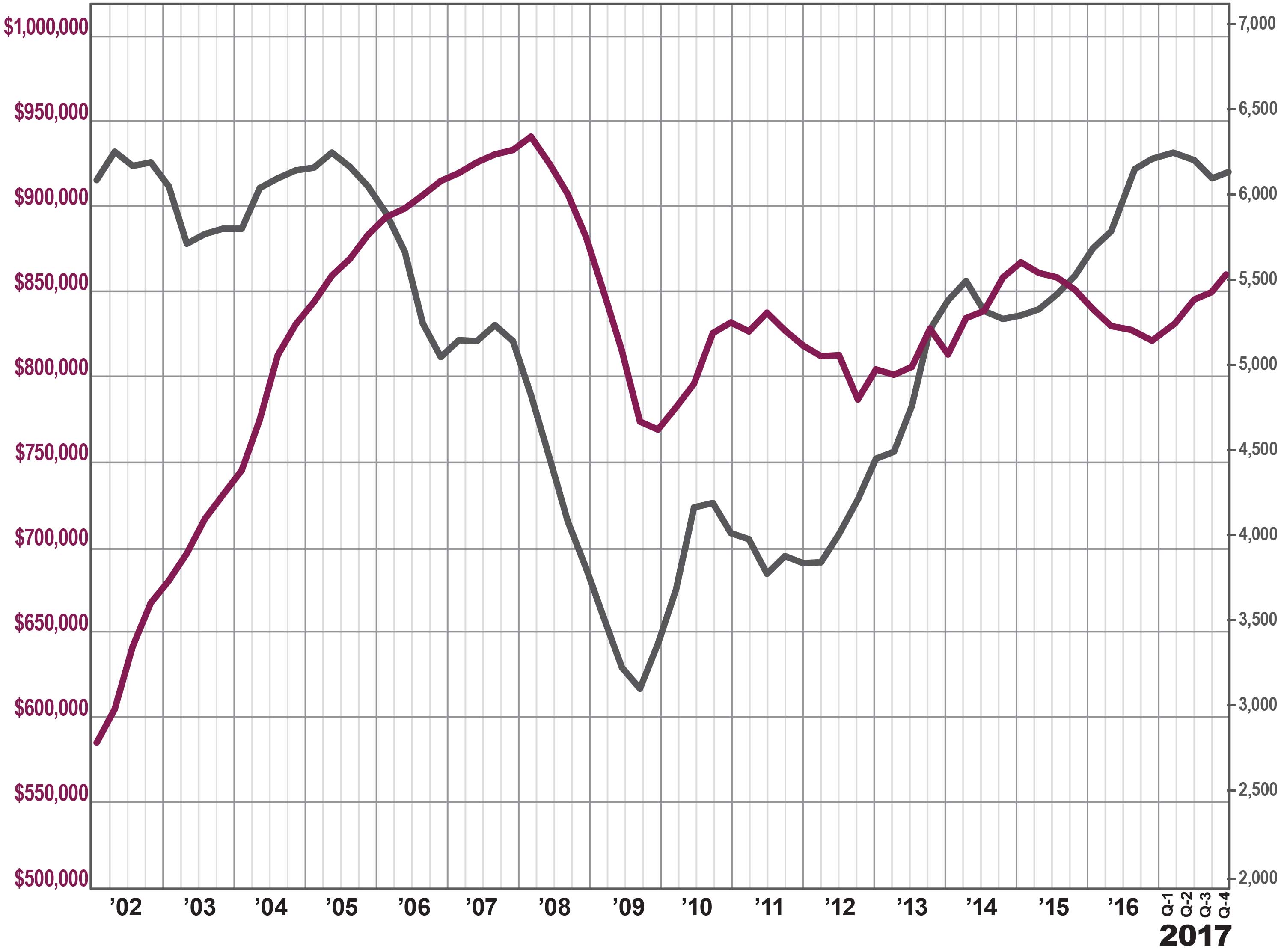
 The Westchester housing market finished strong in 2017, with a surge in prices even while a lack of inventory held back sales growth.
The Westchester housing market finished strong in 2017, with a surge in prices even while a lack of inventory held back sales growth.
Sales. Home sales were up just a tick, rebounding a bit from their sudden decline in the third quarter. You can see the continued impact of a lack of inventory, though, with sales down almost 2% for the full year. Still, with over 6,100 sales for the year, transactions in Westchester are now at their highest level since 2005, and almost double where they were at the bottom of the market in 2009.
Prices. With inventory this low, and demand remaining high, we are starting to see some acceleration in price appreciation. Prices were up 5% on average and at the median for the quarter, and for the year finished up 4% on average and 3% at the median. This is welcome news for Westchester homeowners, who saw small average and median price drops over the past two years. That said, the average and median price are still at 2005 levels, without even accounting for inflation.
Negotiability. The negotiability indicators continue to signal the emergence of the seller’s market. Inventory declined again, falling over 8% and now at the lowest level of inventory we have had in Westchester in over 12 years, since the height of the last seller’s market. Similarly, for the full year, the listing retention rate was up, and the days‑on‑market was down, indicating that homes are selling more quickly and for closer to the asking price.
Condos and Coops. The condo and coop market was more uneven. The condo market was sizzling, with average prices up over 8% in the quarter and almost 5% for the year. Sales were down, but that’s certainly because inventory is below the three‑month level. The coop market was more mixed, with sales up for the year and prices relatively flat, even while inventory fell to the three‑month level.
Going forward, we expect that Westchester will continue to see meaningful price appreciation in 2018, especially if inventory remains tight. With pricing near 2005 levels and interest rates near historic lows, we believe that the seller’s market will thrive in the new year.
To learn more about Better Homes and Gardens Real Estate Rand Realty, visit their website and Facebook page, and make sure to “Like” their page. You can also follow them on Twitter.
Fourth Quarter 2017 Real Estate Market Report: Orange County Overview
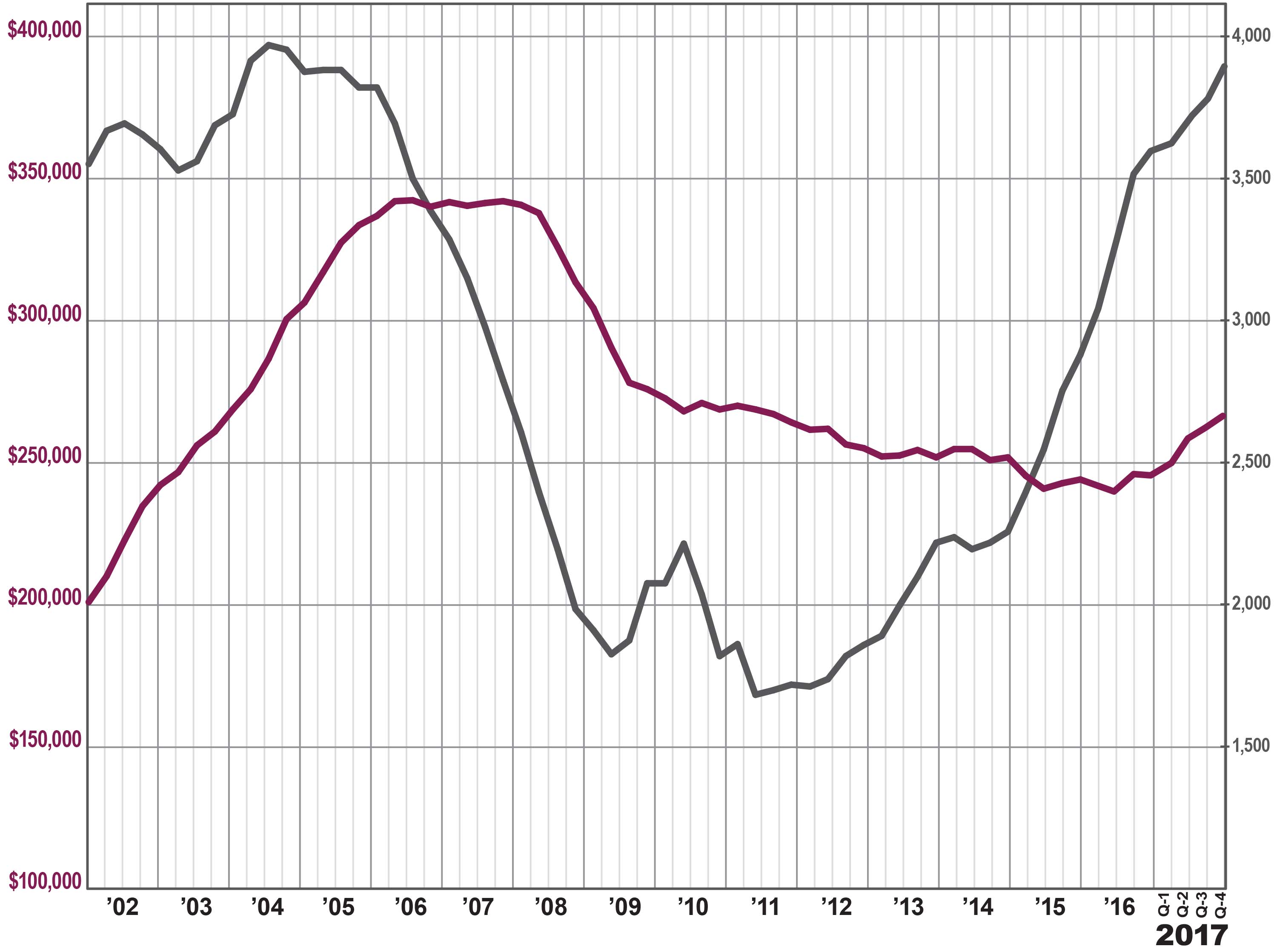
 The Orange County housing market surged again in the fourth quarter of 2017, finishing a robust year with a flourish.
The Orange County housing market surged again in the fourth quarter of 2017, finishing a robust year with a flourish.
Sales. Orange sales spiked in the fourth quarter, rising almost 15%. Quarterly transactions have now gone up in 13 straight quarters and 22 out of the last 23. Similarly, sales were up almost 8% for the calendar year, marking the sixth straight year of increasing transactions. Indeed, the 3,837 calendar year sales was the highest yearly total since 2004, at the height of the last seller’s market, and is more than double the sales totals from the bottom of the market in 2009.
Prices. These continued increases in buyer demand are finally having a sustained impact on pricing. Home prices rose again in the fourth quarter, up 3% on average, over 7% at the median, and almost 5% in the price‑per‑square‑foot. And for the first time in years, prices were up meaningfully for the calendar year, rising almost 5% on average, almost 6% at the median, and over 3% in the price‑per‑square‑foot. Price appreciation was a long time coming in Orange County, but it’s finally here.
Negotiability. The available inventory continues to tighten, down almost 27% and now well below the six‑month level that signals a seller’s market. Meanwhile, homes are selling more quickly and for closer to the asking price. Indeed, over the past year, the days‑on‑market average fell 23 days, and the listing retention rate rose over a full point.
Condos. The condo market absolutely exploded in the fourth quarter, continuing a welcome trend that we finally started to see this year. Sales were up a whopping 37% and prices spiked almost 13% on average and 14% at the median. For the year, sales were up almost 23% and prices were up sharply. This marked the first year where condo prices have gone up since 2007 ‑‑ over 10 years ago.
Going forward, we believe that the Orange County housing market is poised for a great year: demand is high, prices are still at attractive 2003‑04 levels, interest rates are at historic lows, and the economy is generally strong. With inventory continuing to decline, we expect to see significant sales growth and meaningful price appreciation throughout 2018.
To learn more about Better Homes and Gardens Real Estate Rand Realty, visit their website and Facebook page, and make sure to “Like” their page. You can also follow them on Twitter.

 Facebook
Facebook
 X
X
 Pinterest
Pinterest
 Copy Link
Copy Link



